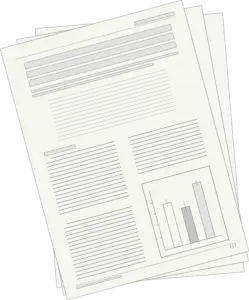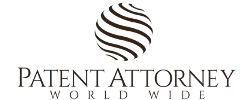Step 2: Patentability search or novelty search (optional step)
A patentability search, also known as a novelty search, is a comprehensive investigation conducted to assess the novelty and non-obviousness of an invention. It involves searching existing patents, published literature, and other sources to determine if the invention meets the criteria for obtaining a patent and if it has novelty and inventiveness.
Table of Contents
What is Patentability search or Novelty search
Patentability Search or novelty search is a comprehensive search performed by the patent attorney to make a judgment about whether the invention is novel and worth proceeding for the drafting and filing stage.

Although this is an optional step, there are some advantages of this search that you may like to consider before deciding.
The main purpose of this search is to find out if it is worth making the investment for filing a patent application for the invention. And to find out the patentability of your invention.
In this search the objective is to find out the closest possible prior art related to our invention. This would help us understand if our invention has novelty and when compared to prior arts it may help us establish non-obviousness as well.
The patentability search involves
- advance keyword search tactics
- classification search
- Search by company name or assignee
- combination of different strategies in a single search query
- searching forward and backward references of a good prior art
- search in different patent databases
- Patent applications that are published
- Patents that are granted
- non-patent literature like articles blogs websites
- IEEE papers and non-patent literature search
- products and services available in market
- and other relevant platforms in the domain of your invention
The patentability search is aimed at finding out the novelty and nonobviousness of your invention. The novelty can be answered quite objectively, if all elements of our invention are found to be present in a single prior art document then our invention might not be novel.
But finding out non-obviousness is a bit tricky. We need to make a judgment whether elements of our invention present in different prior art documents (not a single document) can be combined to arrive at our invention?
In simple words, the question is, was it obvious for a person skilled in the art to combine multiple prior art documents and arrive at our invention?
Since the novelty search identifies the closest possible prior arts relating to your invention, by reviewing the results found, an opinion about the patentability of your invention may be provided by the Patent attorney.
The patentability opinion may be positive, negative, or neutral.
In the search report, the results found in the novelty search are closely analyzed and map against the elements of our invention. It really helps if you could identify how your invention is different and or improved when we compare it to the results that are cited in the search report.
The ideal case would be, some aspects of our invention is solving a long-standing problem that the prior arts failed to solve. This would prove strong evidence for the non-obviousness of our invention.
The patentability search report and the opinion provided helps you decide whether to go ahead with the patent or not. Sometimes, what you thought as a novel invention might already be patented or known to the public that is forming a 100% overlapping prior art for our invention.
In such a case, a novelty search report saves your time, effort, and cost helping him decide not to proceed with an invention which anyway would be objected to or could not obtain a patent due to lack of novelty.
Hence this report saves lots of time, effort, and cost of the inventor by helping him decide whether to go ahead with the costs required for the patent filing process or not.
| Novelty Search | Responsibilities | |
| Inventor |  | answering to questions by the Patent attorney, reviewing patentability search report and closest possible prior arts. |
| Patent agent or attorney |  | understand invention disclosure and performing patentability search, prepare report and give opinion on patentability |
| Patent office |  | —– |
Cost of patentability search : the professional fees for a Patent attorney can range from EUR 500 to EUR 2000
Time required for patentability search : the time required is about 5-7 working days
The outcome of this patentability search report
- You get to know about the opinion on the patentability of an invention
- When we compare our invention with the closest possible prior art found in the patentability search report, the non-obvious and novel feature would be identified.
- The novel aspect of the invention obtained via patentability search can be leveraged while writing patent application and especially claims of patent such that our patent application stands a good chance going through the examination stage to a granted patent.
- In case the patentability opinion is negative, then it saves a lot of cost and time which would be unnecessarily invested in proceeding with the patent filing process and eventually getting the application rejected.
Opinion on patentability
Based on the result of the patentability search patent attorney give an opinion about the patentability of your invention:
- Negative opinion: If there are results in patentability search report which are almost the same as your invention and there is no novelty in your innovative idea compared to existing knowledge. That is there is no novelty; then a patent agent or attorney might advise you not to go for patent filing. This will save you a lot of time and costs that you otherwise would be incurring on filing a patent application for an invention which would not result in a granted patent.
- Neutral opinion: in this case, the patent agent/attorney is of the opinion that your invention stands a fair chance of getting a patent grant for some aspects of your invention which are found to be novel and having non-obviousness based on results in patentability search. You may receive some objections from the Patent office yet by responding to it you may get a patent for your invention.
- Positive opinion: When your invention has some features that are novel and non-obvious when compared with existing knowledge and prior arts found in the patentability report. This is a positive sign and a patent agent or attorney might advise you to go ahead with patent filing with a positive opinion of patentability search.
Although having benefits this is an optional step. You may choose to directly file the patent application without going for a patentability search.
When a novelty search is not taken
There are some instances where you (the inventor) may decide to not take the novelty search and save that investment for patent writing and filing, some of such scenarios could be :
- When you are a business owner, you are going to launch your product or service into the market anyway, and you want patent protection for the invention. You require a patent pending status or patent application number to mention on the product/website for obvious benefits like positive image in the eyes of customers, bankers, channel partners; establishing you as an expert in the industry; and to raise funding, etc. In such case you may think to skip novelty search and go directly for patent drafting and filing stage
- Another scenario would be if you are a student or from an academic institution, and you wish to strengthen your resume with patent application number and ultimately patent granted for your invention, and if you are on a tight budget; then you may want to skip the novelty search and go directly to patent drafting and filing.
Advantages of a patentability search
- Patentability search helps us in identifying the closest possible prior arts which are likely to be found by the examiner at the examination stage of the patent application. Hence considering these prior arts before writing a patent application increases the chances of getting a patent granted.
- The results of the patentability search help patent attorney to draft better claims, particularly focused on novel part of the invention.
- The identified prior arts are mentioned in the references and our invention is established as a solution to a long-standing problem that is not yet solved. Such an approach creates good chances of proving non-obviousness, which improves chances of getting a patent granted for our invention.
- And ultimately patentability search also saves a lot of unnecessary costs, efforts and procedures in filing the patent application for an invention that doesn’t stand a chance of surviving patentability criteria and would be rejected anyway.
Next aticle : Step 3: Patent drafting / writing
